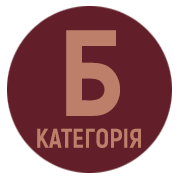THE ISSUE OF TRANSLATING TEMPORAL STYLIZATIONS IN CONTEMPORARY WORKS
DOI:
https://doi.org/10.24919/2522-4565.2021.45.33Keywords:
temporal stylization, high style, emotionally-expressive coloringAbstract
Vocabulary always corresponds to the time of creation and differs at different times and in different territories. There are languages and dialects for territorial differences. Although it may be complicated, their translation is nevertheless supported by dictionaries, scientific works and practice. Temporal vocabulary can be found in texts of two varieties: 1. texts written in distant eras 2. historical or quasi-historical modern stylizations, where the authors deliberately stylize the language of description in the temporal aspect. The relevance of this work lies in the analysis of the interlingual transmission possibilities of temporally stylized texts between closely related languages. The object of research is the temporal vocabulary of the Russian language used in modern literary works in Ukrainian translation. The subject of research is the translation of lexical and stylistic means by which the effect of quasi-historical stylization is achieved. The problem of translating the temporal component of the work is one of the least researched both in theoretical and practical terms. In theoretical terms, the scientific interest is to determine the composition and status of lexical layers, sources of their origin and patterns of their use in various areas of communication. It should also be noted that there are no theoretically developed criteria for distinguishing features of temporal stylization, research on the mechanism of generating of historical language stylization strategy, determining the functions of the high stylistic layer vocabulary, sources of its formation and development trends. Discussion questions are related to the choice and implementation of strategies for adequate translation and the integrity of the semantic and emotional load of translated texts. Thus, the degree of equivalence of the translation can be quite objectively determined by comparing the reaction of the recipients to the translated text and the original, and that correspondence of the recipients’ understanding of the text will be the criterion for evaluating the results of the translation process.
References
Алефиренко Н.Ф. Современные проблемы науки о языке : учебное пособие. Москва : Флинта, 2018. 416 с.
Виноградов В.С. Введение в переводоведение (общие и лексические вопросы). Москва : Издательство института общего среднего образования РАО, 2001. 224 с.
Гаврилів Т. Текст між культурами. Перекладознавчі студії. Київ : Критика, 2005. 200 с.
Літературознавча енциклопедія : у 2-х т / авт.-уклад. Ю.І. Ковалів. Київ : Академія, 2007. T. 1. 178 с.
Романова Л.Г. Адекватность и эквивалентность как переводческие категории: теоретико-экспериментальное исследование : дис. … канд. филол. н : 10.02.19 ; Челябинский государственный университет». Челябинск, 2011. 260 с.
Чуковский К.И. Высокое искусство: Принципы художественного перевода. Санкт-Петербург : Авалонъ, 2008. 448 с.
Crystal D. Words in Time and Place: Exploring Language Through theHistorical Thesaurus of the Oxford English Dictionary. Oxford : OxfordUniversity Press, 2014. 304 p.



